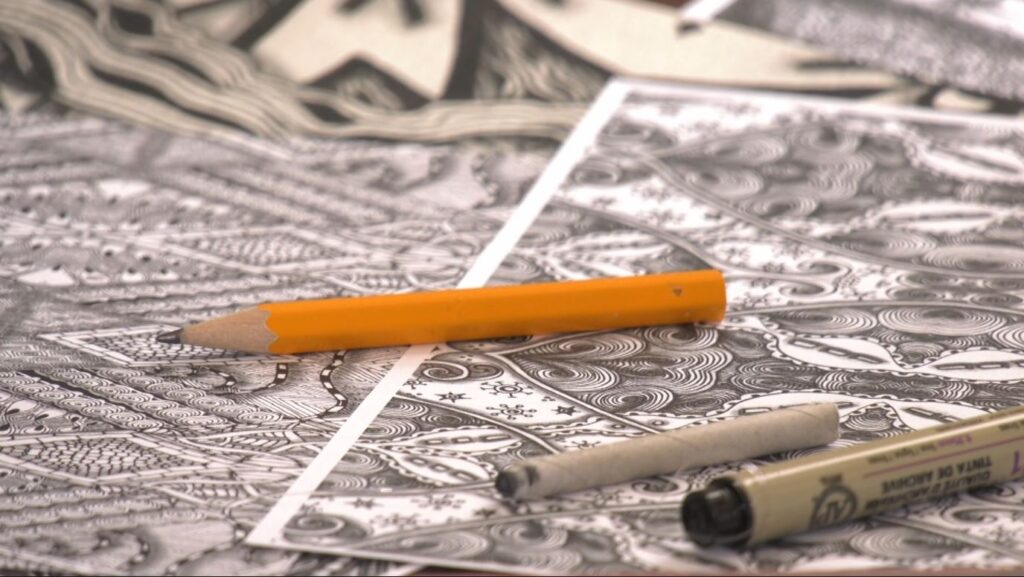Creative contemplation through Zentangle art
Esther Piszczek encountered Zentangle after leaving her job as a prosecutor and moving to a small town in Michigan’s Upper Peninsula.
She got her first Zentangle kit in 2011, moved to Duluth in 2012, and had her first show in 2013.
“Zentangle is non-representational pattern drawing that’s contemplative and meditative,” Piszczek described.
Now she teaches the art form and has expanded it to origami, textiles, and even an entire piano.
“You don’t have to know how to draw a house or a profile or a landscape or a fish or a sailboat. You don’t have to know any of that,” she said. “You just need to be able to draw a line.”
The supplies are simple: “a 3.5-inch square paper tile … a pencil without an eraser, a 01 Micron pen, and a tortillon.” But Piszczek says you can do it with any piece of paper and a pen.

The patterns drawn on the tile are mirrored and replicated to create larger patterns. And when those are folded into origami, they create even more new patterns.
“It’s kind of endless. In fact, it is. It’s completely endless,” Piszczek said.
There are no rules and no erasing allowed, which is one of the ways she says it’s encouraged her to wash away some perfectionist tendencies.
She has a website with her portfolio, class information, and future shows.
Learn more about the method on Zentangle.com.